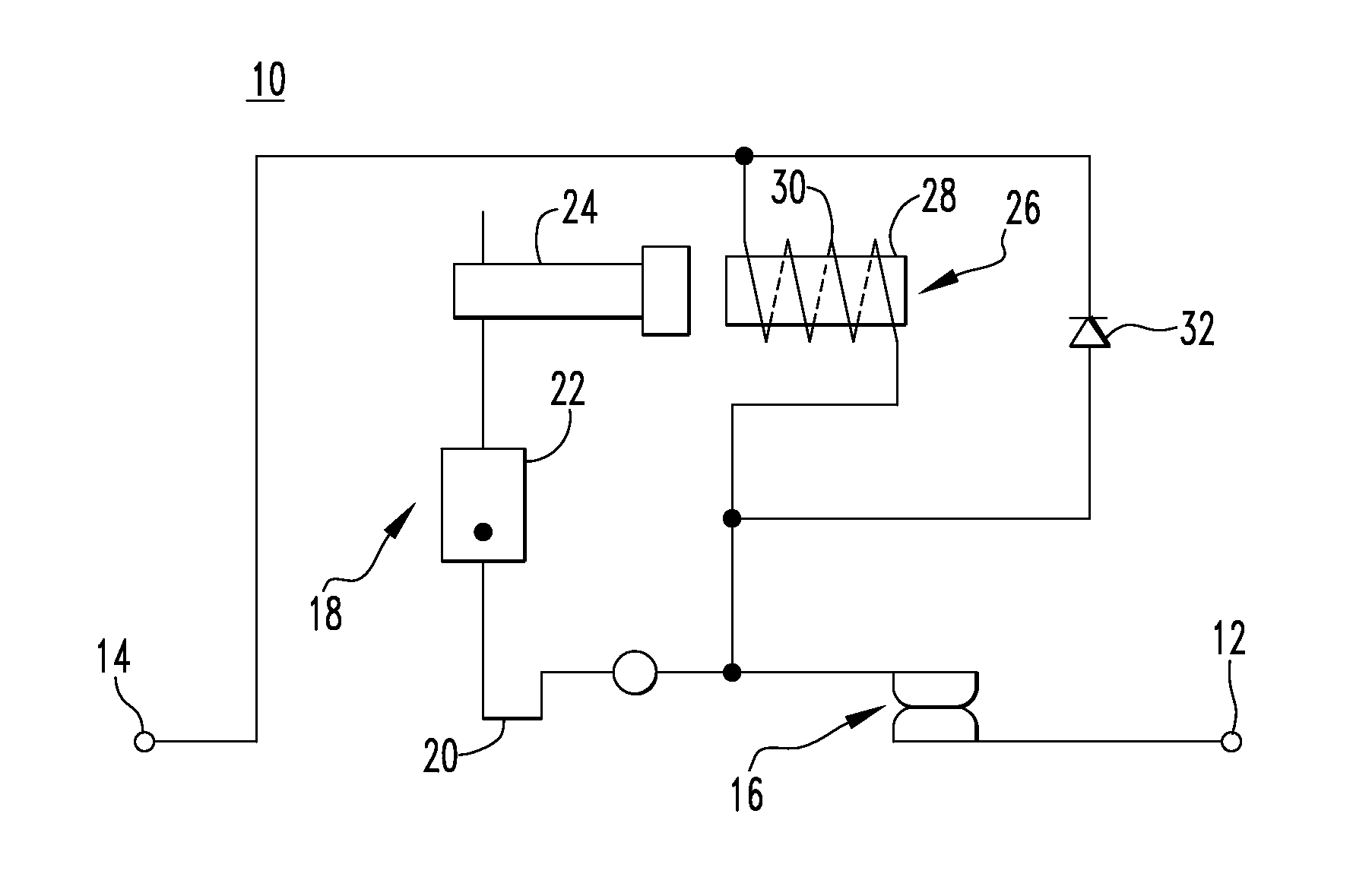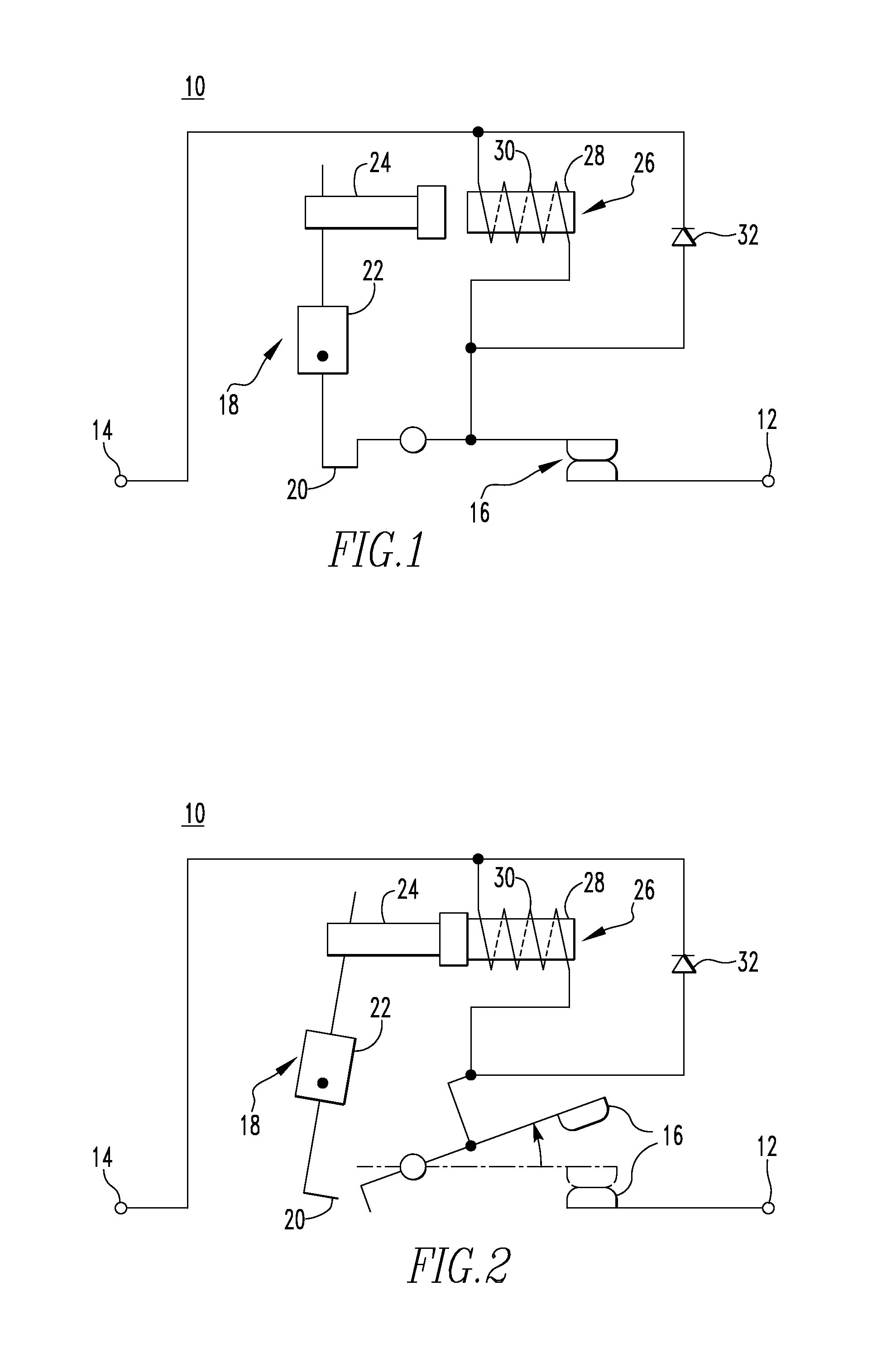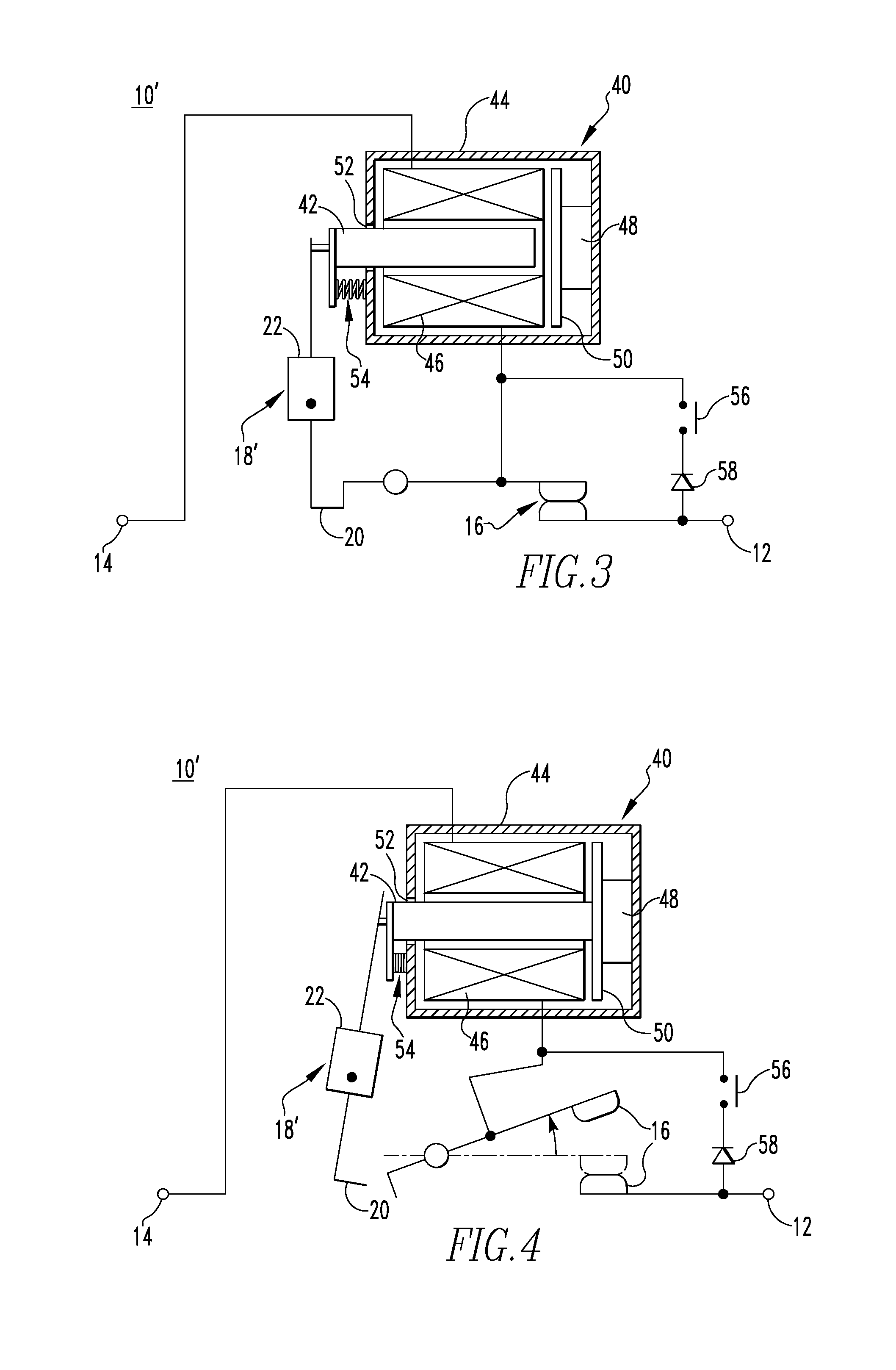Current direction sensitive circuit interrupter
a circuit interrupter and current direction technology, applied in circuit breakers, relays, switches with electromagnetic release, etc., can solve the problems of pv systems with relatively low forward high back-feed reverse short circuit current levels, and it takes hours for a thermal trip to activate a dc fus
- Summary
- Abstract
- Description
- Claims
- Application Information
AI Technical Summary
Benefits of technology
Problems solved by technology
Method used
Image
Examples
Embodiment Construction
[0026]Directional phrases used herein, such as, for example, left, right, front, back, top, bottom and derivatives thereof, relate to the orientation of the elements shown in the drawings and are not limiting upon the claims unless expressly recited therein.
[0027]As employed herein, the statement that two or more parts are “coupled” together shall mean that the parts are joined together either directly or joined through one or more intermediate parts.
[0028]As employed herein, the term “number” shall mean one or an integer greater than one (i.e., a plurality).
[0029]As employed herein, the term “string” shall mean a series electrical circuit connection of a plurality of electrical generating modules.
[0030]As employed herein, the term “direct current electrical generating module” (DC EGM) shall mean a photovoltaic (PV) electrical generating module, a battery or a fuel cell.
[0031]Referring to FIG. 1, a circuit interrupter 10 in accordance with an example embodiment of the disclosed conc...
PUM
 Login to View More
Login to View More Abstract
Description
Claims
Application Information
 Login to View More
Login to View More - R&D
- Intellectual Property
- Life Sciences
- Materials
- Tech Scout
- Unparalleled Data Quality
- Higher Quality Content
- 60% Fewer Hallucinations
Browse by: Latest US Patents, China's latest patents, Technical Efficacy Thesaurus, Application Domain, Technology Topic, Popular Technical Reports.
© 2025 PatSnap. All rights reserved.Legal|Privacy policy|Modern Slavery Act Transparency Statement|Sitemap|About US| Contact US: help@patsnap.com



